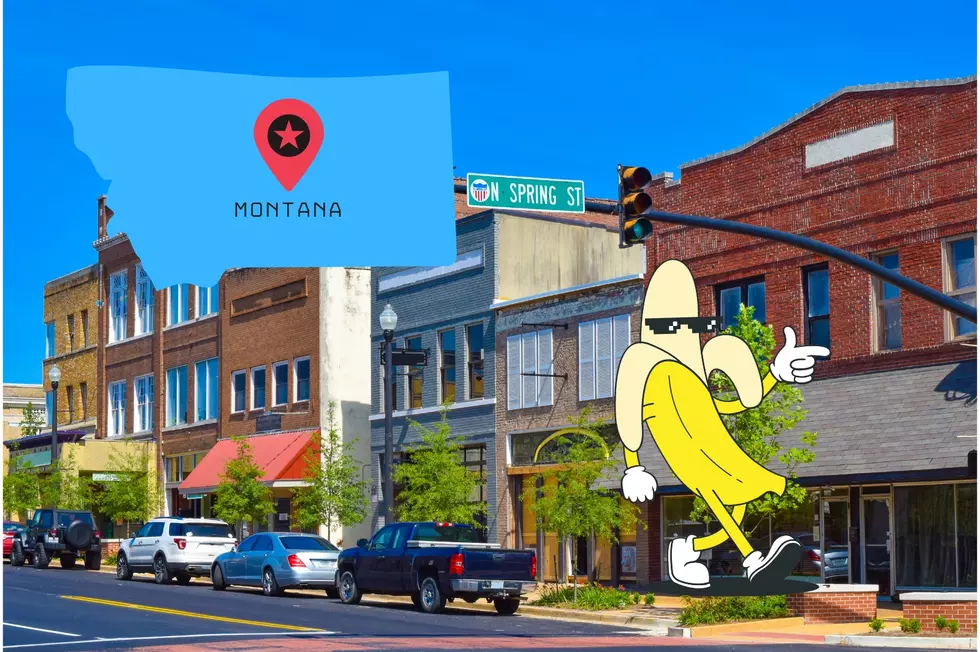
Unusual Weather: Preparing for a Rough Montana Wildfire Season
BUTTE, MT - Have you been enjoying the lovely "Spring" weather our state of Montana has been experiencing recently? After getting a brief cold spell across the state this last January, Montana has been lucky enough (or unlucky enough, depending on your preferred sports of choice) to get some awesome warm and sunny weather poking through some occasional clouds. I know I've been enjoying my bike rides recently, and I've seen many others out on walks, hikes, skating, you name it. But the terrifying question looms over all of our heads: at what cost?

Dryer weather—and a dryer winter in general; easily one of the driest in recent memory—is associated with a higher risk for wildfires coming up this summer. In fact, many of you can probably recall the very few number of wildfires last summer, 2023, due to the extremely wet winter and spring the seasons that preceded it. This year, however, officials and locals alike are gearing up for the potential craziness from our dry season. It makes sense: lower amounts of snowpack mean less moisture in the soil and vegetation, creating ideal conditions for fires to start and spread.
No reason to worry, though, since I've created this brief beginner's guide to help you prepare your property and your mind for the upcoming season—and at a low cost.
Let's get into how you can prepare for a rough Montana wildfire season.
Creating Defensible Space
A space that has clear, defined boundaries and is easily manageable is your first line of defense against wildfires. This concept is simple and involves managing vegetation around your property to reduce fire intensity and spread. Most of us here in Montana have vegetation around our property, so this is very useful.
- Zone 1 (0-5 feet from structures): Keep this area free of all flammable materials, including vegetation. Use gravel or concrete for walkways and patios.
- Zone 2 (5-30 feet from structures): Reduce vegetation density. Trim trees and bushes, keeping them spaced and low to the ground to prevent fire from climbing.
- Zone 3 (30-100 feet or to your property line): Maintain natural vegetation while ensuring it's thinned out and healthy, reducing the chance of fire spread.
Fire-resistant Landscaping
Incorporate fire-resistant plants and materials into your landscaping. Choose plants with high moisture content in leaves, limited resin or sap production, and those that are slow to ignite. Gravel walkways and stone walls can act as firebreaks.

Emergency Preparedness
Although it may not be fun to think about, it is important to have emergency and contingency plans in case of the worst.
- Evacuation Plan: Have a clear evacuation plan for your family and pets. Know multiple routes out of your area and have an emergency kit ready. Communicate the plan with family and maybe even friends. Keep in mind that many others near you will probably take similar routes, so be prepared and have a back-up.
- Emergency Supplies: Assemble an emergency kit with necessities such as water, non-perishable food, medications, important documents, and clothing for several days. If you can manage, have easy-access bins or other small storage containers to pack away photo albums, personal treasures, and other sentimental items you can't replace.
Home Resilience
Now that you have the area surrounding your home prepared, it's time to strengthen your home against embers and direct flame contact.
- Roofs and Gutters: Use fire-resistant roofing materials. Clean gutters regularly to prevent accumulation of leaves and pine needles. You may just want to clear your roof of debris as much as possible, as one ember can be devastating on an unprepared roof.
- Vents and Eaves: Install 1/8 inch metal mesh screens on vents to prevent ember penetration. Don't forget to enclose eaves to limit ember exposure.
- Windows: You may want to consider dual-pane windows with one pane of tempered glass to resist heat and breaking. May sound overboard, but anything you do can help prevent the unthinkable.
Get Involved with Community Coordination
Engage with the community for a more coordinated approach to wildfire preparedness. Your fellow residents may have something you can use or a better idea for a plan that helps everyone. Even consider setting up a local town meeting to get the conversation of wildfire preparation going.
Stay Informed
- Alert Systems: Sign up for local alert systems to receive timely information on wildfires and evacuations. Also, I know that us here at the station—in the event of a wildfire—would keep you guys updated through our station app.
- Weather Monitoring: Pay attention to weather forecasts and fire danger ratings in your area. Though no one can predict the weather, staying on top of forecasts can prove to be useful.

There's no way to tell if and when a wildfire will happen, and us humans can't control them. But we can take control of how we prepare, and by following these simple steps, you may be much better off for this upcoming summer season.
The Top 7 Solar Eclipse Controversies
Gallery Credit: Devon Brosnan
Living Large in Montana: Pics of a $13mil Property
Gallery Credit: Devon Brosnan
Here's 8 States That Have Longer And Harsher Winters Than Montana
Gallery Credit: Derek Wolf




